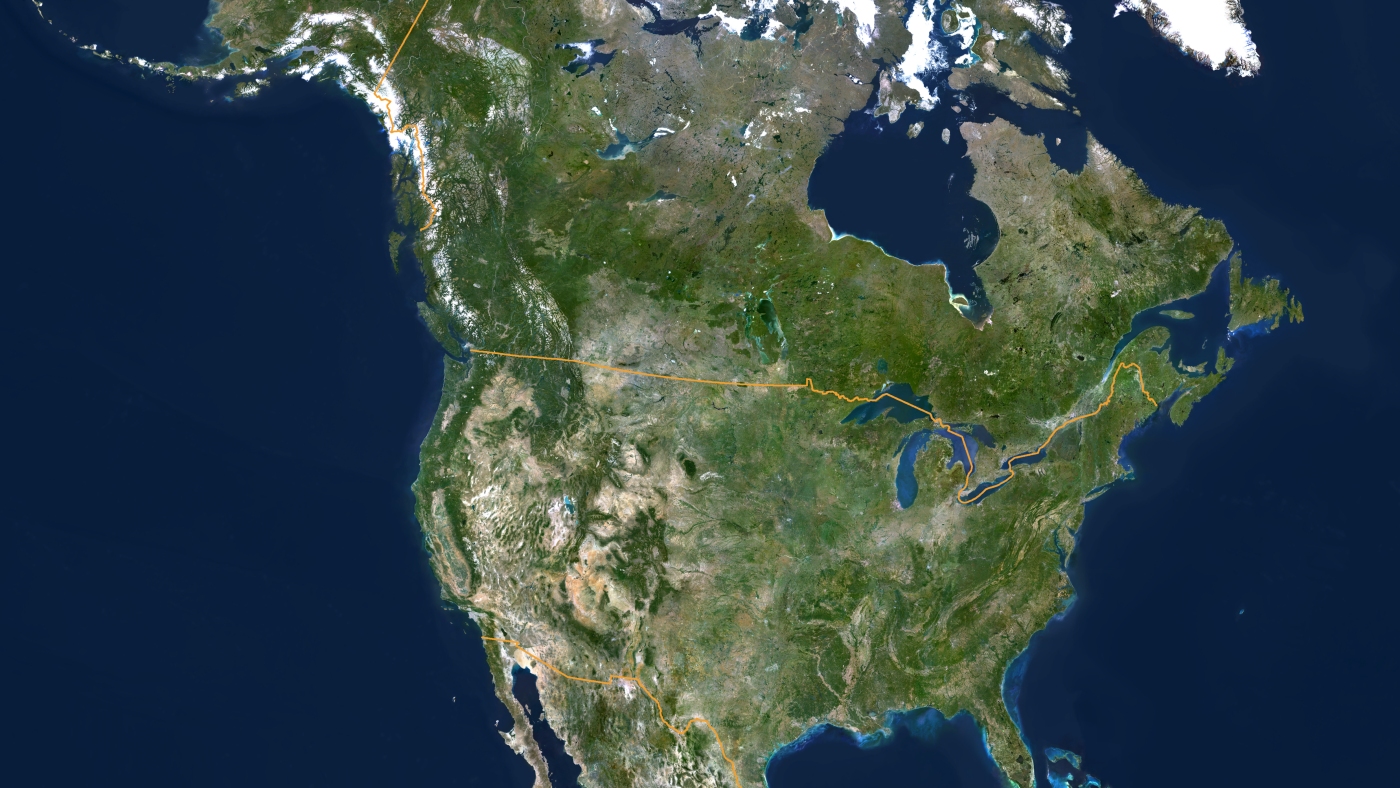The U.S.-Canada Border: A Historical and Geographical Analysis
The U.S.-Canada border, often oversimplified as an “artificial line,” is a topic shrouded in debate and misunderstanding. To grasp the true nature of this boundary, one must explore its historical and geographical context, which reveals a story of intricate negotiations, treaties, and shared history.
A Boundary Shaped by History
The U.S.-Canada border is not a random demarcation but a result of a series of treaties that unfolded over centuries. The journey began with the Treaty of Paris in 1783, which concluded the American Revolution and recognized the Mississippi River as the western border of the newly independent United States. This treaty was the first of many that would shape the modern boundary.
Key Treaties and Agreements
Several pivotal treaties have defined the U.S.-Canada border over the years:
– The Convention of 1818: This agreement established the 49th parallel as the border between the U.S. and Canada from the Lake of the Woods to the Rocky Mountains. It was a significant milestone in delineating the modern boundary.
– The Oregon Treaty of 1846: This treaty further refined the border, particularly in the Pacific Northwest, setting the stage for the peaceful coexistence of the two nations in the region.
– The Webster-Ashburton Treaty of 1842: This treaty resolved boundary disputes in the Northeast, particularly in Maine and New Brunswick, further solidifying the border.
These treaties, among others, have collectively shaped the U.S.-Canada border into the complex and recognized division it is today.
Geographical and Political Complexities
The U.S.-Canada border is not merely a line on a map; it is a intricate web of geographical features and political agreements. Stretching nearly 9,000 kilometers, it is the longest international boundary between two countries. This border traverses a diverse range of landscapes, including dense forests, towering mountains, and vast bodies of water such as the Great Lakes, the Atlantic Ocean, and the Pacific Ocean.
The Tangible Nature of the Border
The legitimacy of the U.S.-Canada border is not diminished by its artificial origins. Instead, the process of drawing and maintaining this boundary has involved centuries of diplomatic negotiations, treaties, and, in some instances, military skirmishes. These historical events have transformed the border into a tangible and recognized division between two sovereign nations.
The Modern Perspective
In contemporary times, the U.S.-Canada border is often hailed as the world’s longest undeclared border, symbolizing the peaceful coexistence and mutual respect between the two countries. This border is more than just a geographical line; it stands as a testament to the diplomatic and political agreements that have fostered peace and stability in North America.
The Misconception of an “Artificial Line”
The notion that the border is “artificial” oversimplifies its intricate history and ongoing significance. The border is a product of centuries of negotiations, treaties, and mutual agreements that have ensured stability and cooperation between the United States and Canada. To dismiss it as merely an “artificial line” is to overlook the complex history and the enduring legacy of this boundary.
The Impact of Political Rhetoric
President Trump’s characterization of the U.S.-Canada border as an “artificial line” has sparked considerable debate and criticism. Critics argue that this description undermines the historical and diplomatic efforts that have shaped the border. Experts contend that while the border is indeed man-made, it is no less legitimate or significant.
The Diplomatic Efforts Behind the Border
The U.S.-Canada border is a result of extensive diplomatic efforts, including negotiations, treaties, and mutual agreements. These efforts have ensured that the border remains a symbol of peace and stability between the two nations. The border’s significance lies in its ability to facilitate cooperation and maintain a peaceful relationship between the United States and Canada.
The Border’s Enduring Significance
The U.S.-Canada border is more than just a line on a map; it represents a complex history of diplomacy, conflict resolution, and mutual respect. It is a testament to the enduring relationship between the United States and Canada, two nations that have maintained a peaceful and cooperative border for centuries.
The Legacy of Peace and Stability
The U.S.-Canada border’s enduring legacy is one of peace and stability. The border has facilitated cooperation and mutual respect between the two nations, ensuring that they remain close allies and neighbors. The border’s significance lies in its ability to foster a peaceful and cooperative relationship between the United States and Canada.
Conclusion: The Border’s Enduring Legacy
The U.S.-Canada border is far from an “artificial line.” It is a product of centuries of diplomatic efforts, treaties, and mutual agreements that have shaped it into a tangible and recognized division between two sovereign nations. The border’s significance lies not in its artificial origins but in its enduring legacy of peace and stability. To dismiss it as merely an “artificial line” is to overlook the complex history and ongoing significance of this boundary. The U.S.-Canada border stands as a testament to the power of diplomacy and the enduring legacy of peace and cooperation between two great nations.

